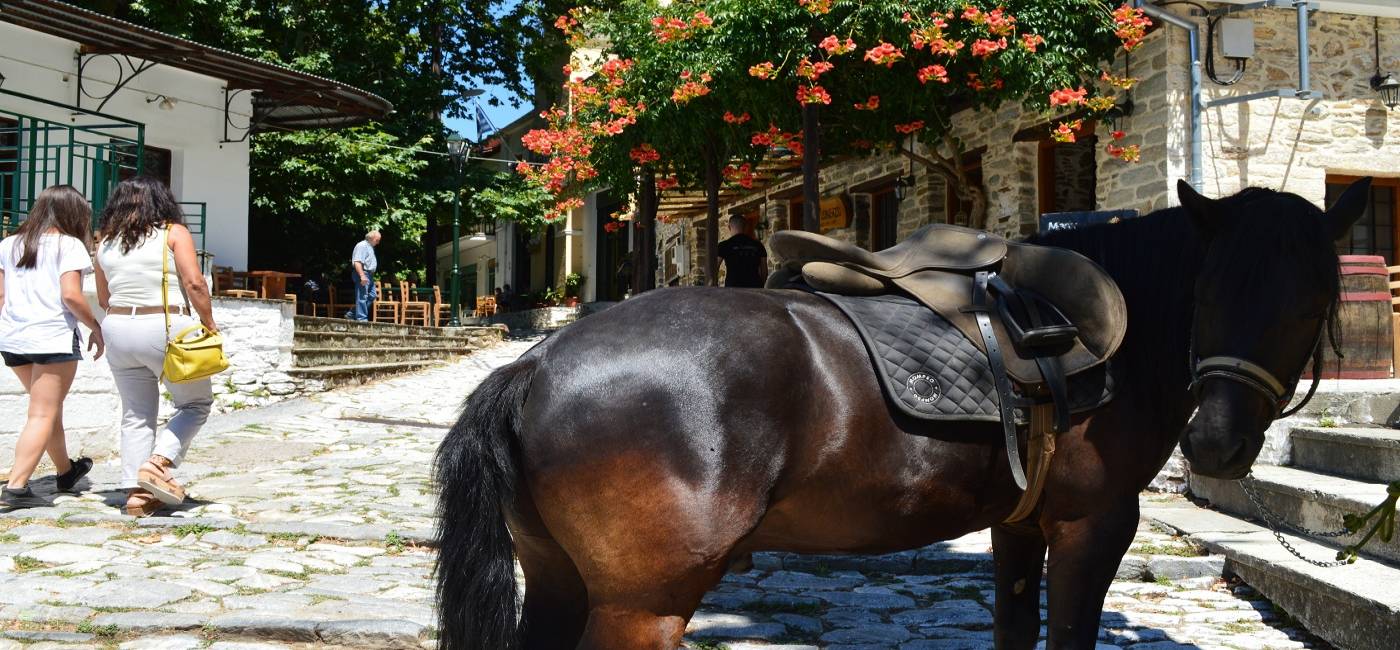Agios Lavrentios
Agios Lavrentios is the Pelion village par excellence. Not only because it's the perfect place for a vacation year-round, combining spectacular sea views with the crisp mountain air. Nor because it's a quiet picturesque village with old cobblestone streets, marble fountains, a traditional plateia, and beautiful local architecture. But mostly, because the village's history encapsulates the beginning and development of Pelion habitation.
Until the 11th – 12th century only gods, heroes and mythical creatures lived on the mountain whose dense forests and inaccessible slopes deterred human exploration. These same elements, however, eventually attracted Christian hermits seeking the isolation found in the steep Pelion ravines. A number of monastic communities were soon created throughout Pelion, which later became known as the “Mountain of the Cells” comparable to Mount Athos and Meteora.
In Agios Lavrentios specifically, a monastery was founded in the 11th century by Benedictine monks. During the 12th century it was passed to Orthodox Christians and restored by Saint Lavrentios, a monk who came to Pelion from the monastery of Great Lavra in Mount Athos. By the 14th century, a small supporting community began developing next to the monastery. The topography was ideal. Although it has a view to the sea, the village itself is not easily visible from the sea, providing safety from pirates that raided the seaside communities of the Pagasitikos Bay for centuries. Many other Pelion villages share these same topographic characteristics and were also created nearby monasteries.
During the Ottoman occupation, the cultivation and trade of olives, olive oil, and fruit brought prosperity to Agios Lavrentios without, however, leading to ostentatious architecture and wealth display.
The connection of the villagers to Christianity was deep from the very beginning and remains so to today. The village boasts its own saint, Saint Apostolos the New, a young man born and raised in Agios Lavrentios who at the age of 19 was martyred at Constantinople in 1686. At the church dedicated to Saint Apostolos the New, located today at the same exact spot where his family house used to stand, the holy skull and clothing of the martyrdom are piously kept along with other valuable objects that bear witness to the miracles the Saint performed in the region of Pelion.
In the same period, the Monastery of Agios Lavrentios remained the core of the village and played an important role in religious, civic and political matters. In its guest house, the proclamation of the War of Independence of Thessaly was signed by the monk Kassavetis. Today, the monastery operates as nunnery and is one of the main tourist attractions of the village.
Agios Lavrentios is an ideal vacation destination no matter the season. It is also perfect for day trips to visit the Nunnery and Church of Agios Apostolos the New, to relax with a stroll on the cobble stone streets, sip a cup of coffee at the plateia, and enjoy a delicious lunch or dinner at one of the many taverns or boutique hotels the village has to offer.



